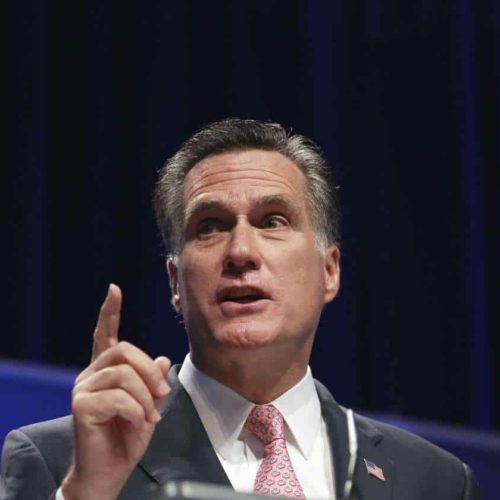Introduction
Hedge fund billionaire John Paulson is upping the ante on his already huge bet on Mitt Romney, opening his palatial Southampton home for a late August fundraiser.
Paulson has already donated $1 million to Restore Our Future PAC, a super PAC created by three top allies from Romney’s abortive 2008 campaign to help him cement the 2012 nomination. The PAC can accept unlimited funds but is legally required to operate separately from the campaign.
A big bundler for Romney’s campaign, Paulson — who made billions betting on the decline of the housing bubble — is emblematic of how wealthy individuals often wear two fundraising hats in the aftermath of the Supreme Court’s Citizens United ruling last year. That decision gave the green light for donors (including corporations and unions) to give unlimited sums to independent groups that advocate expressly for candidates.
Paulson’s fundraising is one of a few instances where the fundraising operations of the campaign and the super PAC appear to overlap and may benefit each other.
- Romney has shown his appreciation for the super PAC by attending several of its fundraising events including a dinner in New York on July 19 that drew about two dozen potential and current donors, including Paulson, according to fundraisers familiar with the PAC.
- Lisa Spies, who runs PAC fundraising and Jewish outreach for the Romney campaign, is married to Charles Spies, a founder of the PAC who serves as its treasurer and was general counsel to Romney’s 2008 campaign.
In an interview with the Center for Public Integrity, Charles Spies said there was no conflict between their roles. “Her clients are separate from mine and my law firm’s,” Spies said.
Campaign finance lawyers and watchdog groups say that Federal Election Commission rules define coordination to allow some fundraising overlap between campaigns and independent groups, thereby creating sizable loopholes. “FEC regulations allow an enormous amount of actual coordination that’s not considered under the law to be illegal coordination,” said Trevor Potter, a former chairman of the FEC and president of the independent Campaign Legal Center. “The regulations allow a significant amount of overlap in fundraising.”
But Potter added, “These loopholes are clearly not what the Supreme Court had in mind when it spoke about independent spending campaigns” in its Citizens United decision.
Others concur.
“The reality of coordination and the ways in which the improper narrow FEC regulations define coordination have little if anything to do with each other,” Fred Wertheimer, the head of Democracy 21, said in an interview with the Center for Public Integrity.
According to their separate disclosure reports, the PAC has received $12.2 million in unlimited donations and the campaign has roped in $18.3 million.
Besides Charles Spies, the other founders of the PAC are Carl Forti, who was Romney’s political director in 2008, and Larry McCarthy, who was a member of Romney’s media team.
The $12.2 million raised by Restore Our Future in its first six months, suggests that it can potentially be a major force boosting Romney’s candidacy partly by mounting large advertising drives nearer the GOP primaries.
ABC News has reported that over $6 million of the $12.2 million raised by the Super PAC came from individuals who had already donated to Romney’s campaign. Curiously, Paulson, who founded the eponymous hedge fund Paulson & Co., has not yet made a donation to the Romney campaign.
On the Democratic side, there’s plenty of overlap too. Take Jeffrey Katzenberg, the CEO of Dreamworks, who has bundled over $500,000 for the Obama campaign. He is also the largest single donor, to the tune of $2 million, to Priorities USA Action, a super PAC that was formed early this year by two ex White House aides with the aim of helping President Obama win re-election.
Paulson’s donation to the PAC was one of four $1 million contributions that the PAC received, according to its FEC filing on July 31.
A spokesman for the hedge fund mogul declined to comment on either Paulson’s political fundraising or contributions.
Paulson’s big investment in Romney could raise some eyebrows because he was one of Wall Street’s leading hedge fund investors during the collapse of the housing bubble, making almost $4 billion by betting on the decline of mortgage investments.
Paulson’s name surfaced when civil fraud charges were filed last year against Goldman Sachs by the Securities and Exchange Commission for failing to inform investors who lost about $1 billion that mortgages securities that the firm sold them were products developed with input from Paulson’s firm which bet on them to fail.
Goldman wound up paying a $550 million fine to settle the SEC fraud charges, making it one of the largest cases that the agency has brought. Paulson, who was not charged, netted an estimated $1 billion from these mortgage transactions.
One of the other $1 million donations to the Super PAC ignited a firestorm after NBC News disclosed last week that the contributor listed as W Spann LLC was a Delaware company that was only set up in March, donated in April, and then dissolved in early July.
On Aug. 5, Democracy 21 and the Campaign Legal Center wrote to the FEC and the Justice Department calling for an investigation into whether the donation was illegal since it seemed to be evading disclosure requirements. Campaign finance laws bar donors from giving contributions in the name of another person or “straw donors.”
The next day, Ed Conard, a former top executive with Bain Capital, the private equity firm founded by Romney, told Politico that he was the mystery donor and asked that the PAC amend its FEC report to show it was his money.
After Conard’s disclosure, Wertheimer said he thinks “the matter should still be pursued. The fact that he came forward doesn’t eliminate what appears to be a deliberate effort to hide his identity in violation of the law.”

Join the conversation
Show Comments